Rediscovering Low Altitude: Getting Past the Air Force’s Overcommitment to Stealth
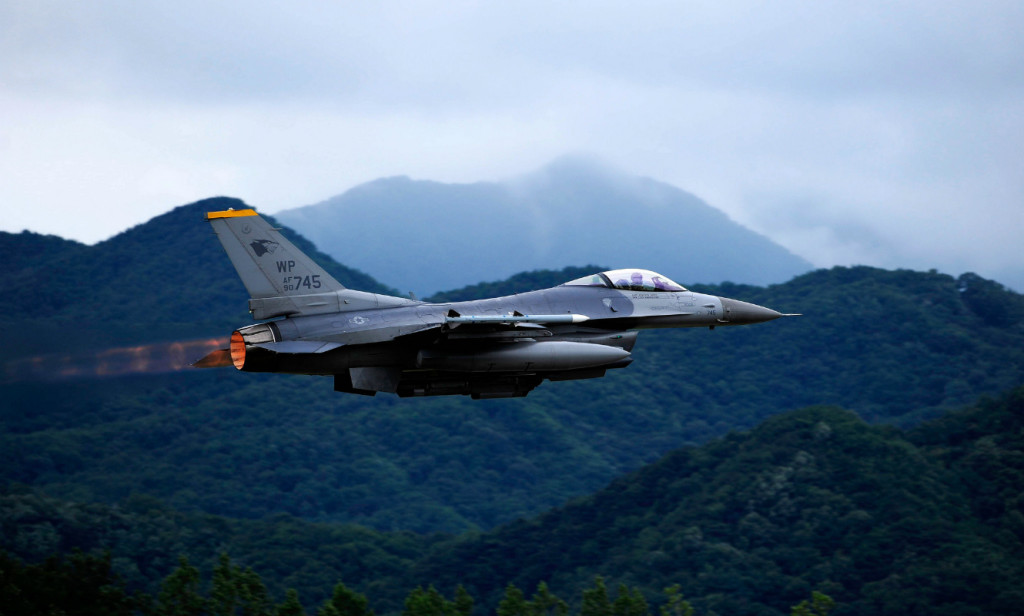
Editor’s note: This is the second in a two-part series, “Stuck on Denial,” which looks at the U.S. Air Force and its use of stealth technology. Read the first part here.
On the night of May 16, 1943, 19 RAF Lancasters from 617 Squadron took off for Germany in darkness. This was no ordinary bombing raid. These 19 aircraft were tasked to fly low into Germany to hit Ruhr Valley dams with a “bouncing bomb” developed just for the purpose. To avoid detection the aircraft flew at low altitude — so low that more than one wingman observed the tops of the treeline above other Lancasters’ twin tails and several Lancasters flew under powerlines that would have destroyed the aircraft. No radars detected them; no night fighters were scrambled to intercept. Alerted by the drone of the four-engine bomber, only gun and spotlight crews knew they were there. Delivering their weapons at a scant 60 feet above the water, the attacks successfully breached two of three primary dams and flooded the Ruhr and Eder river valleys.
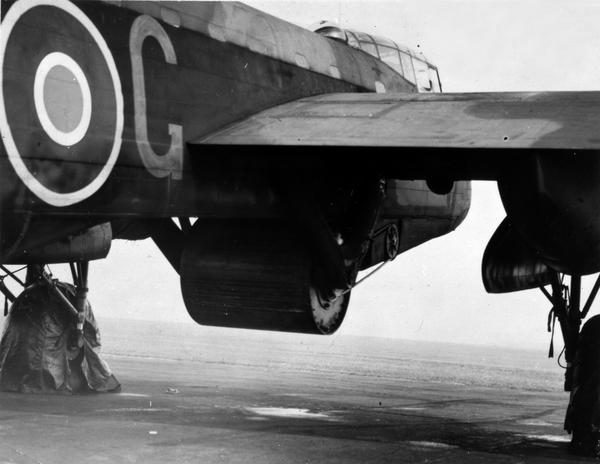
Once upon a time, aircraft avoided radar detection by flying low, sometimes ridiculously low. The benefits were obvious; the Earth is a lumpy sphere, and low altitude provides both cover and concealment. No sensor, be it radar, visual, infrared, or electronic surveillance, can see through a hill. The appearance of an aircraft at low level is often a surprise, and aircraft traversing gaps in terrain at high speed are fleeting targets at best. Even over featureless desert or open water, curvature of the Earth sharply limits the detection range of sensors, which require a direct line of sight. If the sensor lacks that direct line of sight to the aircraft, the aircraft’s “stealthiness” matters not one bit, and an airplane over the radar horizon might as well be on the moon. Once over the horizon, a B-52 and an F-35 are equally impossible to see, despite the B-52’s unparalleled radar signature and the F-35’s unbelievably hot engine. It is an obvious and well-worn method of penetrating hostile airspace, and the U.S. Air Force has almost given it up.
After the Gulf War, stealth was in; low altitude was out. The F-117 slipped in at medium altitude, unmolested by an air defense system that was technically obsolete and hampered by reliance on Soviet command and control doctrine. Non-stealthy jets likewise operated extensively at medium altitude — after a robust defense suppression effort by aircrew flying EF-111A Ravens and F-4G Wild Weasels. With the radar threats effectively destroyed, medium altitude was clearly the way to go. But in the quarter-century since Operation Desert Storm, the Air Force has kept the medium altitude war on its lofty pedestal even while the electronic warfare support elements that made it possible were retired without replacement. In the face of a threat dominated by guerrillas armed with small arms, it seemed reasonable. In the face of an advanced air defense system designed to detect stealthy aircraft, it makes little sense at all. The Air Force’s overreliance on stealth has deprived it of one of its most effective tactics against the air defense threat and locked it into a technologically complex, financially unsupportable acquisition strategy that is already past the point of diminishing return. It is time to return to low altitude.
80% of all aircraft lost in combat are shot down by AAA.
We will never go low again.
You will go low any time the threat, the weather, the weapon, the delivery or the target makes you go low.
— Low altitude aphorisms. Only one is true.
Background
Low-level penetration was accomplished in World War II, Korea, Vietnam, Operation Eldorado Canyon, and even Desert Storm. The RF-4, A-10, F-111, and the B-1 were designed to go low. Terrain-following capabilities were built into the F-15E and added to the F-16. B-52s received a structural modification to strengthen the fuselage for routine low altitude flight, where B-52s training for penetration of Soviet airspace flew so low that they needed to climb to turn the aircraft lest they drag a wing on the ground. Entire weapons systems from the Paveway III laser-guided bombs to the Sensor-Fuzed Weapon were designed to be employed at low altitude against the Soviet threat in a European environment, where flying under a low cloud deck is often necessary if the aircrew is to ever lay eyes on a ground target. Flying low wasn’t just an option — in Europe it was considered the option, if survival against Warsaw Pact air defenses was the goal. Everybody went low, and developments like AWACS and the F-15’s look-down/shoot-down radar were built on the assumption that everybody else was going to go low, too.
Desert Storm changed the paradigm. In the opening days of the conflict, losses were far less than expected, thanks to a robust suppression effort. But those losses that did occur were disproportionately at low altitude. The U.S. Air Force, the Navy, and the Royal Air Force shifted away from low altitude within five days, and that established a mindset that medium altitude was the way to go. It was an obvious conclusion, buttressed by the fact that in Vietnam, 80 percent of the losses were to antiaircraft artillery (AAA). However, it was the effective destruction of the Iraqi air defense network that made this possible — what was the obvious solution on day four was infeasible on night one. It was also the wrong conclusion. It was true in Desert Storm that most aircraft hit were hit at low altitude, but not 80 percent. But it was also true that most of them were hit in the vicinity of their target area. A-10s were hit because they loitered in the vicinity of the ground forces they were destroying — and those ground forces were never toothless. Tornados were hit because they were attacking airfields — the most heavily defended point targets in the country — and doing it before the air defenses had been suppressed. It wasn’t the altitude that mattered — it was the targets.
Coming to this conclusion took a re-look at aircraft attrition. Accordingly, I built a database of all NATO fixed-wing combat aircraft hit by hostile fire since the Vietnam War. This database will soon be made available, exclusively at War on the Rocks. Historians tend to focus on aircraft that are shot down, but it is more important for our purposes to look at any aircraft that were hit, including those that were not shot down. Being hit is a function of an enemy’s ability to put steel on target, while being shot down is also a function of aircraft survivability, warhead effectiveness, and often just bad luck. The database is complete with respect to aircraft losses and mostly complete with respect to aircraft damage. In the decades since most of the combat losses, the aircrew (or sometimes surviving aircrew) have written extensively about what they were doing when everything went pear-shaped, making it possible to do a deeper analysis to proximate causes. In some cases, combat video has been recovered to document events without the filter of human memories.
In Vietnam, the average fighter or attack aircrew was exposed to antiaircraft fire often. Weapons deliveries had to be accomplished at low altitude to give any reasonable chance of a hit. Navigation was by visual means, radar navigation being suitable only for large formations. North Vietnam had made a massive investment in antiaircraft artillery (AAA) supplemented by Soviet-built radar surface-to-air missiles (SAMs) for those aircraft that flew high enough that terrain was no protection. When the SAMs drove aircraft into the low altitude sanctuary, the AAA gunners were waiting. In a combat environment dominated by the Mk I eyeball, large numbers of AAA allowed a defender to contest the airspace at low altitude.
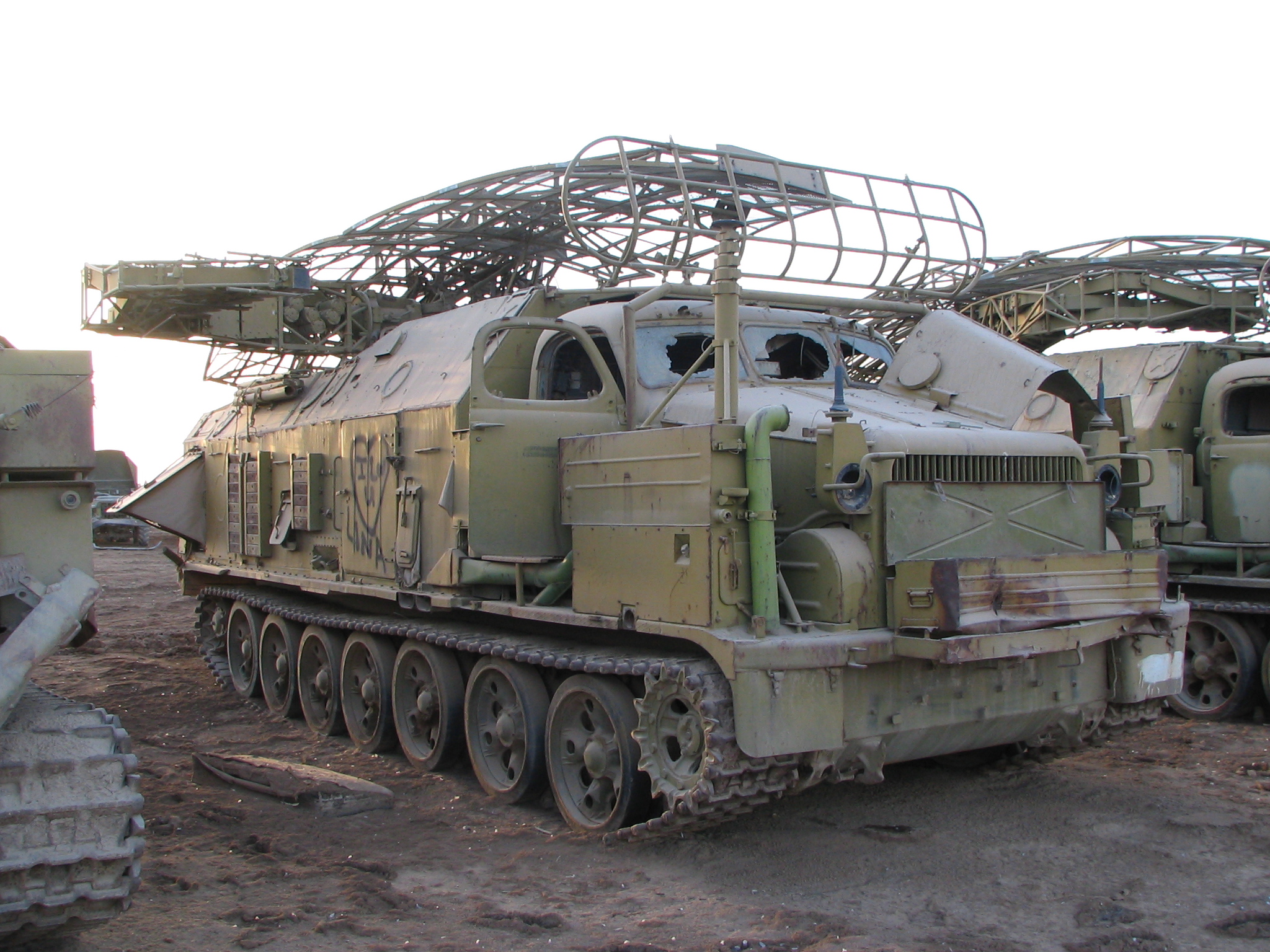
In Desert Storm, Iraq had a similar concentration of AAA, including not only the ubiquitous Soviet-era 23mm and 57mm guns, but also holdovers from decades earlier — the 85mm and 100mm guns that could reach much higher. But above the altitude reachable by the 57mm guns, the larger calibers gained no kills and damaged very few aircraft. Despite carpets of flak “thick enough to walk on,” the massive investment in heavy AAA paid no real dividends. Light (23mm) and medium (57mm) guns remained threatening — mostly around fixed targets and over ground troops. Without radar direction, the large-caliber guns were more bark than bite.
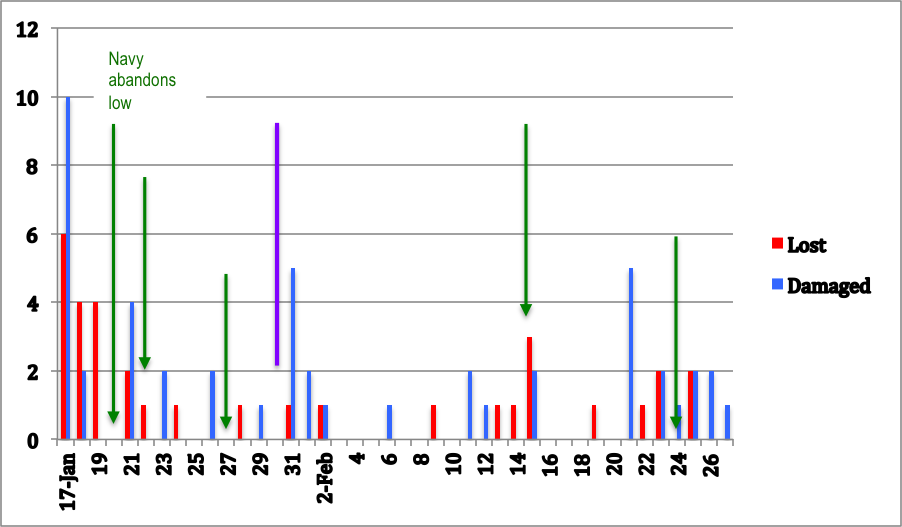
The Desert Storm timeline tells the story. After the third day, damage from SAMs and AAA, which were reliant on radar control, dropped off. Thanks to a robust suppression of enemy air defenses (SEAD) effort, the radar threat remained suppressed for the remainder of the campaign. AAA hits, high on the first night, dropped off. By shifting altitude bands, coalition forces had moved to altitudes that should have increased their vulnerability to radar SAMs, but those SAMs were no longer operational.
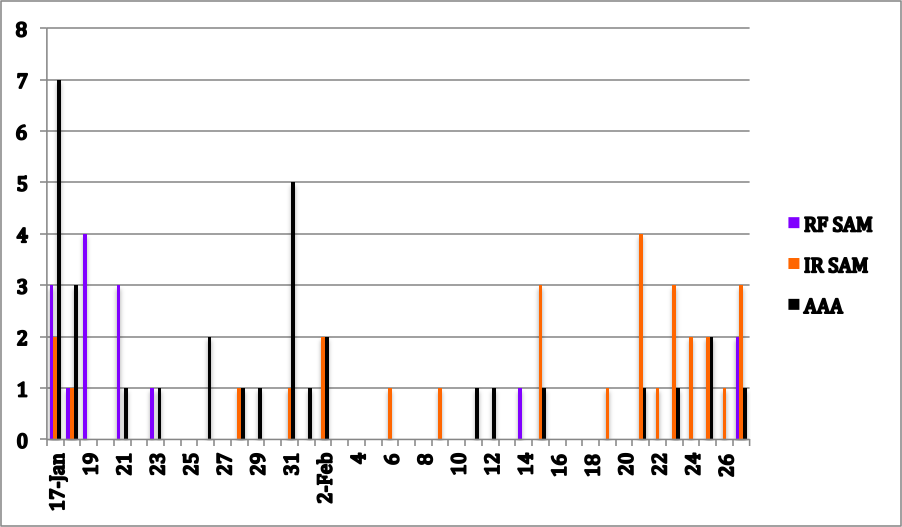
After the first four days, only two aircraft were hit by radar SAMs over Baghdad and another over Al Taqqadum airfield.
With the radar threats suppressed, unguided AAA and infrared (IR) SAMs became the primary source of aircraft damage. Those threats are effectively impossible to suppress. It is no coincidence that the number of aircraft hit during the hours of darkness dropped precipitously after the third night; by that time the majority of threats capable of targeting aircraft at night had been suppressed. While it is often the case that the suppression of enemy air defenses campaign is viewed as having neutered radar SAMs, the same effort also suppressed radar-guided AAA and the acquisition radars that supported both. The extensive destruction wrought on the air defense network as a whole also unraveled the ability of the Iraqis to target aircraft at night. Only four aircraft were hit during periods of darkness for the entire month of February.
The number of aircraft hit spiked during the battle of Khafji and the ground war, when fixed-wing aircraft were heavily involved in supporting ground troops. Most of those hits were during the day, as would be expected in a radar-denied environment. The air defense of Iraq had devolved to purely local defenses targeted by eye.
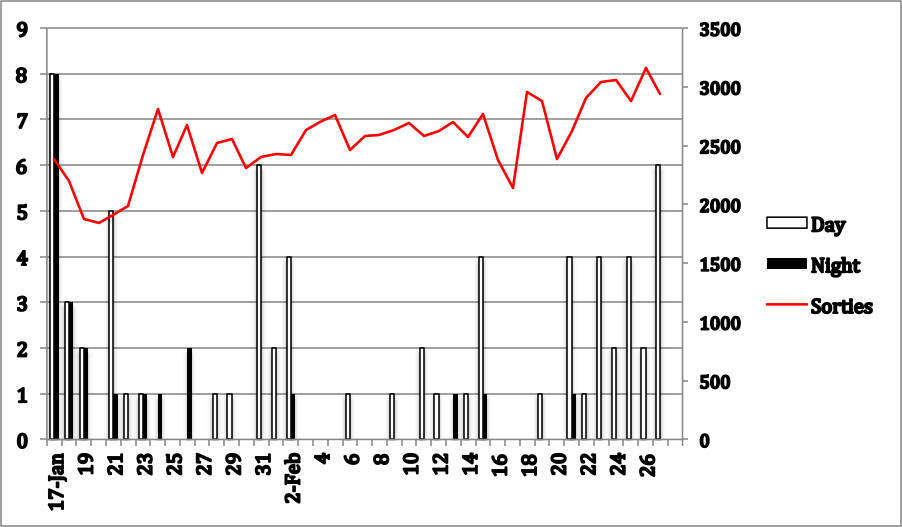
For the post-Vietnam era, the sheer size and intensity of Desert Storm swamps the data from all other conflicts, but some of the trend lines remain constant. For the entire period from 1982 to the present, AAA has dropped off as the primary means of achieving hits on aircraft. In fact, infrared SAMs (typically man-portable systems and the SA-9) by themselves beat out AAA. The vast majority of hits occurred in daylight. It is no longer true that AAA accounts for 80 percent of all aircraft losses. And it hasn’t been true for decades.
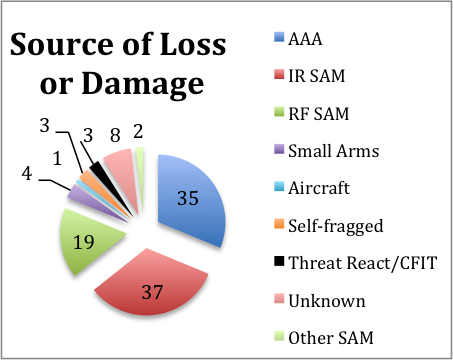
The Myth of Low Altitude
Since Desert Storm, the Air Force has adopted as the “standard” that air defenses will always go away after 72 hours (despite retiring the force structure, personnel, and training programs that made that possible) and that low altitude flight is passé. Except for the A-10, aircraft in Operation Allied Force were prohibited from going below 15,000 feet, even when that meant that targets would remain unaddressed.
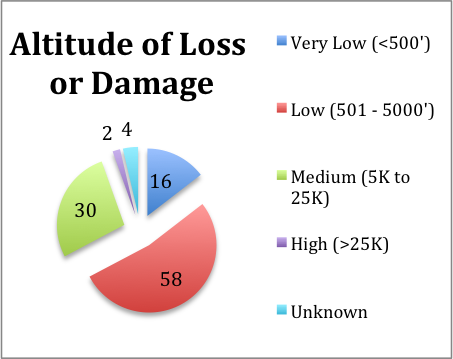
True, the vast majority of aircraft hits since 1982 have been achieved against altitudes less than 5,000 feet above ground level (which is the database definition of low altitude and the absolute limit for small arms fire). Three quarters of the hits are achieved at low or very low (below 500 feet) altitudes. But these stats don’t tell the whole story, or even a significant part of the important story. For decades, the Air Force has been fixated on the altitude at which aircraft were hit. What we should have been focused on was what the aircraft were doing and what phase of the mission they were in.
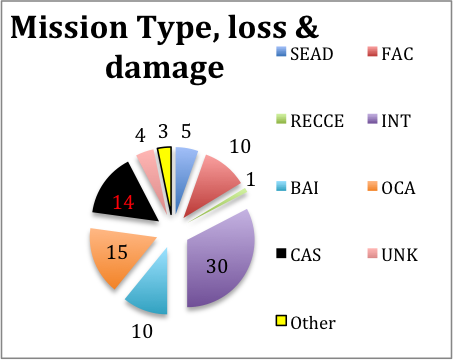
Combat missions are not all created equal, and different mission taskings correlate with different hit rates. In Desert Storm, interdiction, close air support (CAS) and battlefield air interdiction (BAI) accounted for the greatest number of aircraft hit. But the hit rates were a different story. When the number of hits is correlated with the number of sorties, the breakout shows that on a per sortie basis, recce and interdiction missions had the lowest chance of being hit, with BAI having the highest. Offensive counterair (OCA) sorties rise into the top three. Since OCA missions include fighter sweep as well as airfield attack, the hazard associated within that category varies wildly. Separating out only the OCA sorties flown by the RAF (which were entirely airfield attack), the RAF’s traditional airfield attack missions proved the most hazardous. Looking at this data, the altitude at which aircraft were downed is a secondary consideration at best.
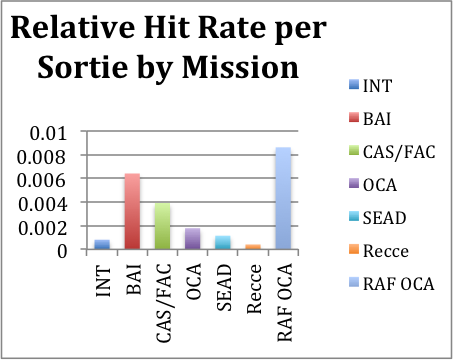
The trend is not limited to Desert Storm. Looking at mission taskings across all of the included conflicts since 1982, the mission-associated attrition changes little. Interdiction and CAS account for the most hits — interdiction because it is by far the largest number of tasked sorties and CAS because of the historical need to fly in the low altitude regime.
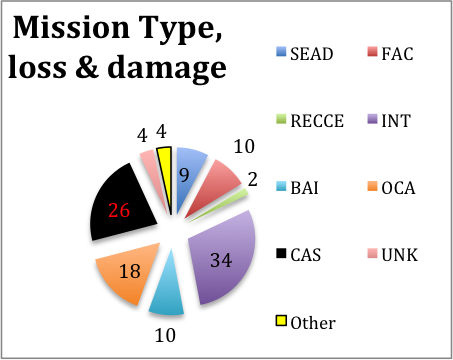
What Were the Aircraft Doing?
The final piece of the puzzle was assembled by determining what phase of flight the aircraft were in when they were hit. Combat sorties were divided into sequential time periods — ingress, IP to target, target area, and egress. (The IP, or initial point, is a navigation point just prior to the target where aircraft “push it up” for weapons delivery.)
The vast majority of aircraft make it to the target unscathed. Survivors of the target area defenses usually make it home. Even at low altitude, aircraft are downed disproportionately in the target area; only four aircraft were hit ingressing to the target (and one more flew into terrain), all at low altitude. Two Tornados were unfortunate to run across air defense batteries on egress and both were downed.
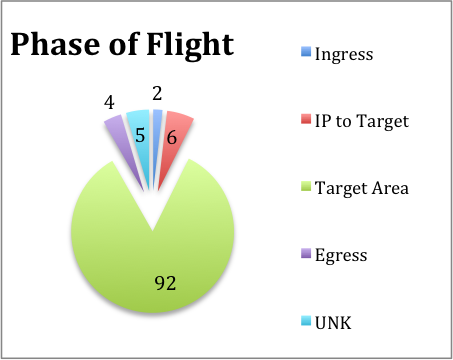
Otherwise, tactical aircraft were relatively safe outside their assigned target areas. Approaching in the low altitude environment is much safer than attacking from it. It is in close proximity to the target where the majority of aircraft are hit — an unsurprising outcome given that targets worth hitting are targets worth defending. Aircraft that loitered over the battlefield (CAS, FAC and BAI) suffered the most hits, mostly from AAA and IR SAMs. Aircrew reports reveal that numerous IR missiles were fired for each hit; most aircrew that reported being hit by IR SAMs did not see the weapon coming. Airfields are brutal air defense environments, often possessing scores of AAA pieces and more than their share of SAM batteries. Aircraft that fly into the mouth of the cat are more likely to be bitten.
Splitting the data up this way suggests that the Air Force has been held captive by old data regarding which threats matter and the impact of altitude on aircraft attrition. For the missions on which aircraft sustained hits, the aircraft had limited capability to stand off from the target area; loft attacks (while common) only gain four miles or so from the aimpoint and some weapons require essentially zero standoff. This is the cost of doing business for CAS and BAI missions, but for the high-risk airfield attack missions, losses might have been reduced had aircraft been able to use even short-standoff weapons. The SAM threat prevented medium altitude attacks from being attempted until the threat was suppressed; by that time many airfields had already been rendered unusable.
Reconsidering Low Altitude
NATO aircrew entered Desert storm well-trained for low altitude operations. Training for the low altitude environment is hazardous and unforgiving, but it produces aircrew who routinely execute difficult tasks in a demanding combat environment. It is a perishable skill — aircrew must fly at low altitude routinely if they are to be kept current. The massive reduction in flying hours given to aircrew since Desert Storm impacts low altitude training; aircrew do not receive the degree of low altitude training that they did 25 years ago because their leadership has de-emphasized low altitude skills. Operators haven’t given up on it; at the USAF’s Red Flag exercises in the Nevada desert, fighters are regularly chased by their shadows across the range, trying to avoid engagement by hiding behind terrain or capitalizing on the Earth’s curvature. It’s a tactic that pays off in combat and not only for fast jets — the special operations community has never given up on low altitude when they want to remain undetected.
In the Falklands, low altitude was a requirement to operate under the weather — the same expectation we had for a fight in Central Europe. In Lebanon, medium altitude deliveries would have been unacceptably inaccurate. F-111s smoked in at low altitude against Libya to delay detection and engagement long enough to deliver weapons at point-blank ranges. In Desert Storm, low altitude was abandoned after the medium altitude radar threat had been largely suppressed. In Allied Force, a risk-averse leadership prohibited low altitude operations, even when it meant that assigned targets could not be hit. Perversely, this may have increased the risk to aircrew by requiring them to revisit targets on a later sortie.
The post-Storm aversion to low altitude tactical operations has been driven largely by the damage done in Desert Storm to aircraft operating at low altitude. Lost in the discussion has been the fact that in the first three days of the war, there was no other sensible option. Had medium altitude attacks been attempted earlier, they might have fared just as poorly as the low altitude strikes. The so-called medium altitude “sanctuary” is effective against IR SAMs and AAA, but requires effective suppression of radar-aided air defenses — a capability that the Air Force largely divested itself of 20 years ago.
At medium altitude, there is no sensor clutter, no cover, and no hill to duck behind. It is a fantasy that stealthy penetrating aircraft are going to cruise in unobserved by sensors that have become increasingly effective in the past 20 years. While it’s not entirely true to assume that at low altitude, everybody is stealthy, it is true that at low altitude there are a number of factors that make it harder for a defender to detect aircraft. These include terrain masking, clutter, and the reduced warning times provided by nap-of-the-earth flying. There are electronic attack techniques that capitalize on the proximity of the ground, and are effective only at low altitude. Decoys can mimic penetrating aircraft more effectively by not appearing out of nowhere against a blue sky background. Everything we used to know about low altitude we can learn again, and thus broaden our capabilities against modern air defenses while declining to chase narrowly applicable and exquisitely priced stealthy aircraft. We cannot spend our way out of the challenge of penetrating air defenses.
In the decades since Vietnam, AAA has stopped being the prohibitive threat that it was then, and our response to changing conditions has lagged behind. It is not true that low altitude operations are obsolescent. Instead it is an enduring and effective combat technique that is relevant today, and which awaits rediscovery.
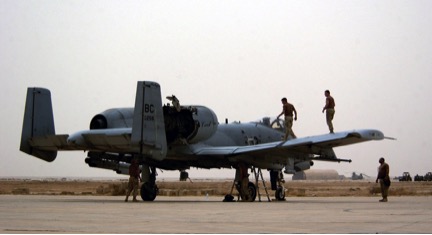
Col. Mike “Starbaby” Pietrucha was an instructor electronic warfare officer in the F-4G Wild Weasel and the F-15E Strike Eagle, amassing 156 combat missions and taking part in 2.5 SAM kills over 10 combat deployments. He has been at 200 feet and Mach 1.2 in an EF-111A with the wings swept back and the autopilot flying the airplane. As an irregular warfare operations officer, Colonel Pietrucha has two additional combat deployments in the company of U.S. Army infantry, combat engineer, and military police units in Iraq and Afghanistan. The views expressed are those of the author and do not necessarily reflect the official policy or position of the Department of the Air Force or the U.S. Government.
*Correction: A previous photo of the equipment graveyard in Taji, Iraq showed artillery pieces. The photo has been replaced with one showing P-40 “Long Track” radar equipment.
Photo credit: Staff Sgt. Nick Wilson, U.S. Air Force

